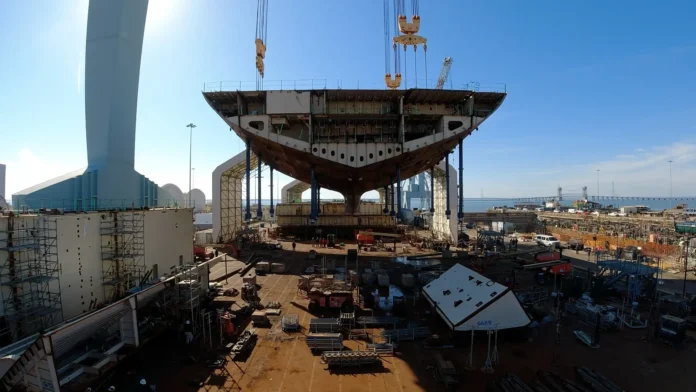American lawmakers are visiting South Korea and Japan to explore ways to strengthen U.S. shipbuilding capacity. Senators Tammy Duckworth and Andy Kim will land in Seoul on Sunday before traveling to Japan. Their goal is to meet top shipbuilders in the world’s second- and third-largest shipbuilding nations. They aim to investigate joint ventures that could boost America’s ability to build and repair naval vessels.
Currently, the U.S. lags far behind China in shipbuilding. This gap worries policymakers who fear China may shift the maritime power balance. China leads the world, producing over half of global shipbuilding capacity. In contrast, the U.S. accounts for only 0.1% of the global market, according to a 2024 report from the Center for Strategic and International Studies.
Senator Duckworth, a member of the Senate Armed Services Committee, emphasized the urgency. “We have less shipbuilding capacity now than during Operation Iraqi Freedom in 2003,” she said. Duckworth pointed out that the existing fleet is aging, breaking down, and taking longer to repair. The senators hope their trip will lead to partnerships between the U.S. military, American companies, and foreign firms. These partnerships could focus on building auxiliary vessels and repairing ships in the Indo-Pacific region.
“If we have to bring ships all the way back to the U.S. for repairs that take two years, it does not help,” Duckworth said. The discussions will center on auxiliary vessels—noncombatant ships like fuel and cargo carriers that support military operations. The Navy’s auxiliary fleet faces shortages and aging problems. An April 2024 Navy review revealed many shipbuilding programs fall one to three years behind schedule.
South Korea and the U.S. have already made significant progress. For example, in March, Hanwha Ocean repaired a 41,000-ton U.S. Navy dry cargo ship in South Korea. Moreover, Hanwha completed this project as its first repair job under its U.S. Navy agreement. In addition, Hanwha Group bought Philly Shipyard in Philadelphia, where workers build large merchant vessels for the auxiliary fleet. More recently, South Korea proposed investing $150 billion to revive U.S. shipbuilding and to support President Trump’s “Make American Shipbuilding Great Again” plan.
Furthermore, Duckworth said she spoke with Hyundai Heavy Industries about investing in U.S. shipyards. Meanwhile, China merged two state-owned companies to create the world’s largest shipbuilder. Consequently, the new China State Shipbuilding Corporation controls 21.5% of the global market and builds advanced combat vessels, including aircraft carriers and nuclear submarines.
As America works to improve its naval power, lawmakers hope new alliances will help rebuild U.S. shipbuilding capacity and counter rising global competition. The coming weeks will prove critical for shaping the future of the U.S. fleet.
For more political updates, visit DC Brief.


